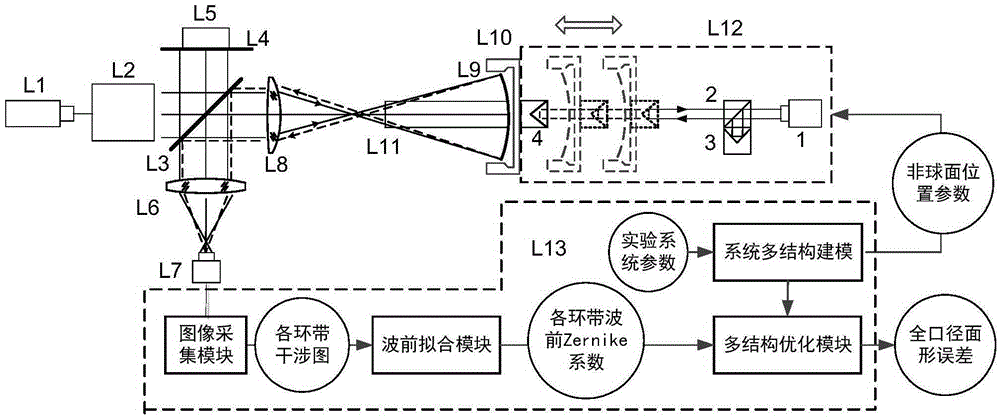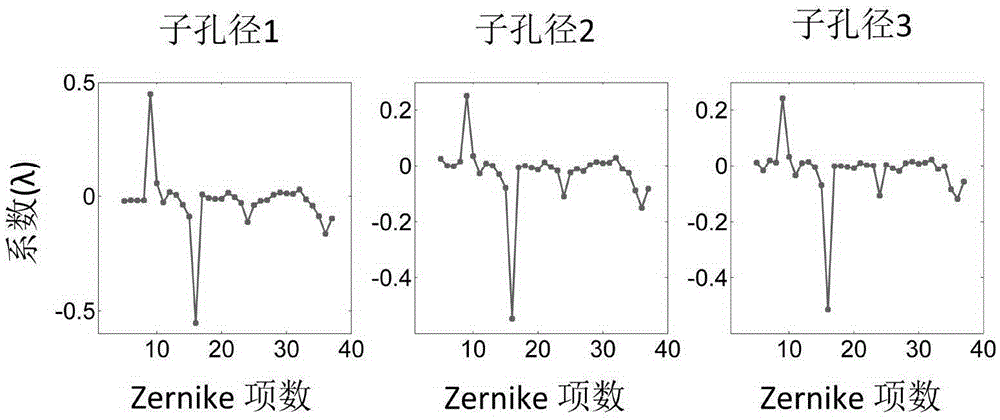Aspheric non-zero digit circular subaperture stitching method based on system modeling
A technology of annular sub-aperture and system modeling, which can be used in measurement devices, instruments, optical devices, etc., and can solve the problems of inaccurate correction of return errors.
- Summary
- Abstract
- Description
- Claims
- Application Information
AI Technical Summary
Problems solved by technology
Method used
Image
Examples
Embodiment
[0050] An example of the application of the present invention to stitching of aspherical non-null annular sub-apertures is described as follows.
[0051] figure 1 It is a diagram of a measurement device for the radius of curvature of an aspheric vertex in a non-zero interference system. The laser wavelength is λ=632.8nm. The thin beam emitted by the laser L1 is expanded into a wide beam of parallel light by the collimator beam expander system L2, and the parallel light travels forward to the beam splitter L3 and is divided into two beams. One path propagates forward to the reference flat mirror L5 and then returns to the original path as a reference wave; the other path propagates forward to the partial zero mirror L8 and then converges and then diverges. The divergent light is basically perpendicular to the measured aspheric surface L9 and then returns, passing through the partial zero again. The mirror L8 enters backward to form a detection wave. The two interfere at the b...
PUM
 Login to View More
Login to View More Abstract
Description
Claims
Application Information
 Login to View More
Login to View More - Generate Ideas
- Intellectual Property
- Life Sciences
- Materials
- Tech Scout
- Unparalleled Data Quality
- Higher Quality Content
- 60% Fewer Hallucinations
Browse by: Latest US Patents, China's latest patents, Technical Efficacy Thesaurus, Application Domain, Technology Topic, Popular Technical Reports.
© 2025 PatSnap. All rights reserved.Legal|Privacy policy|Modern Slavery Act Transparency Statement|Sitemap|About US| Contact US: help@patsnap.com



